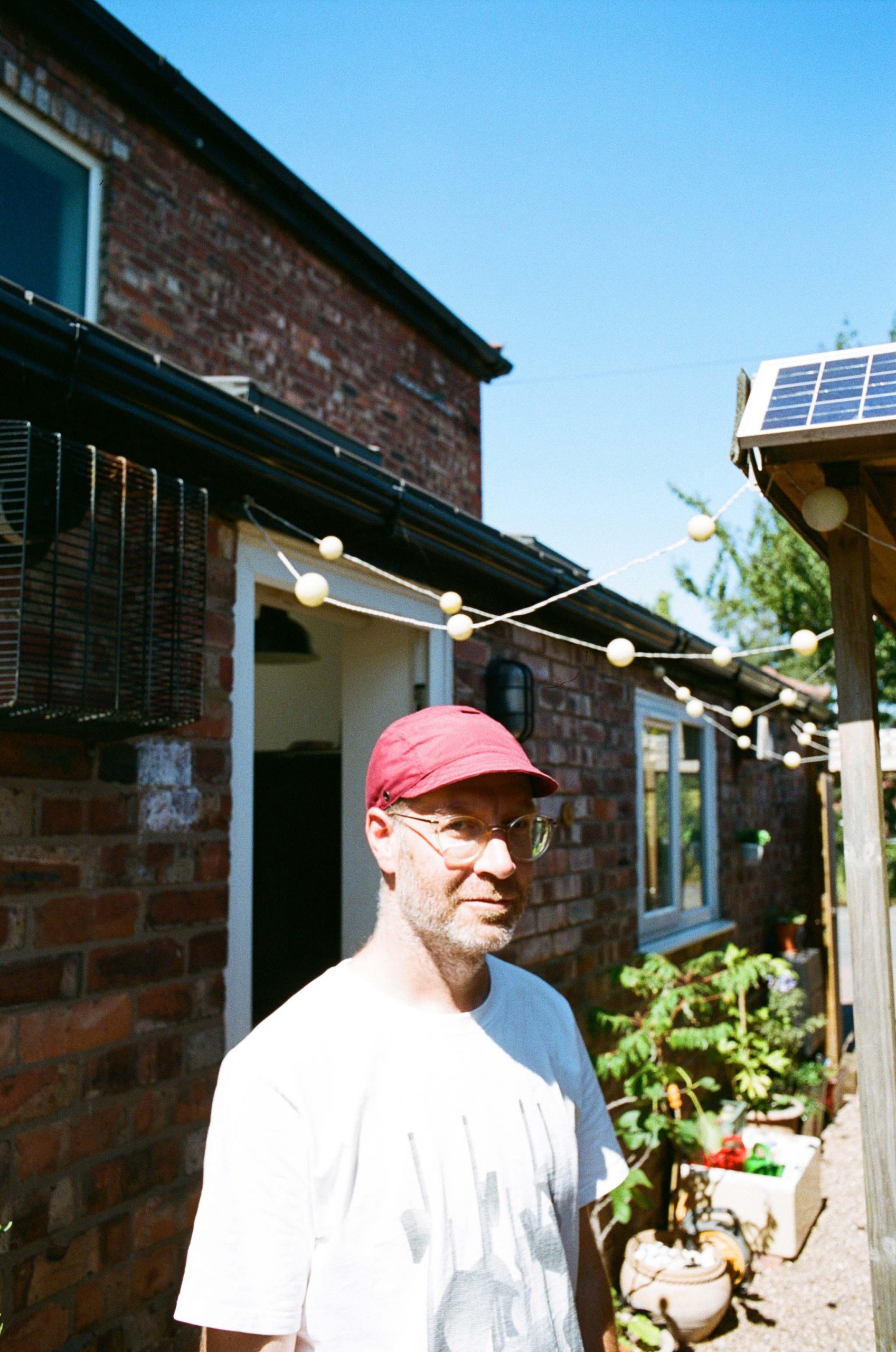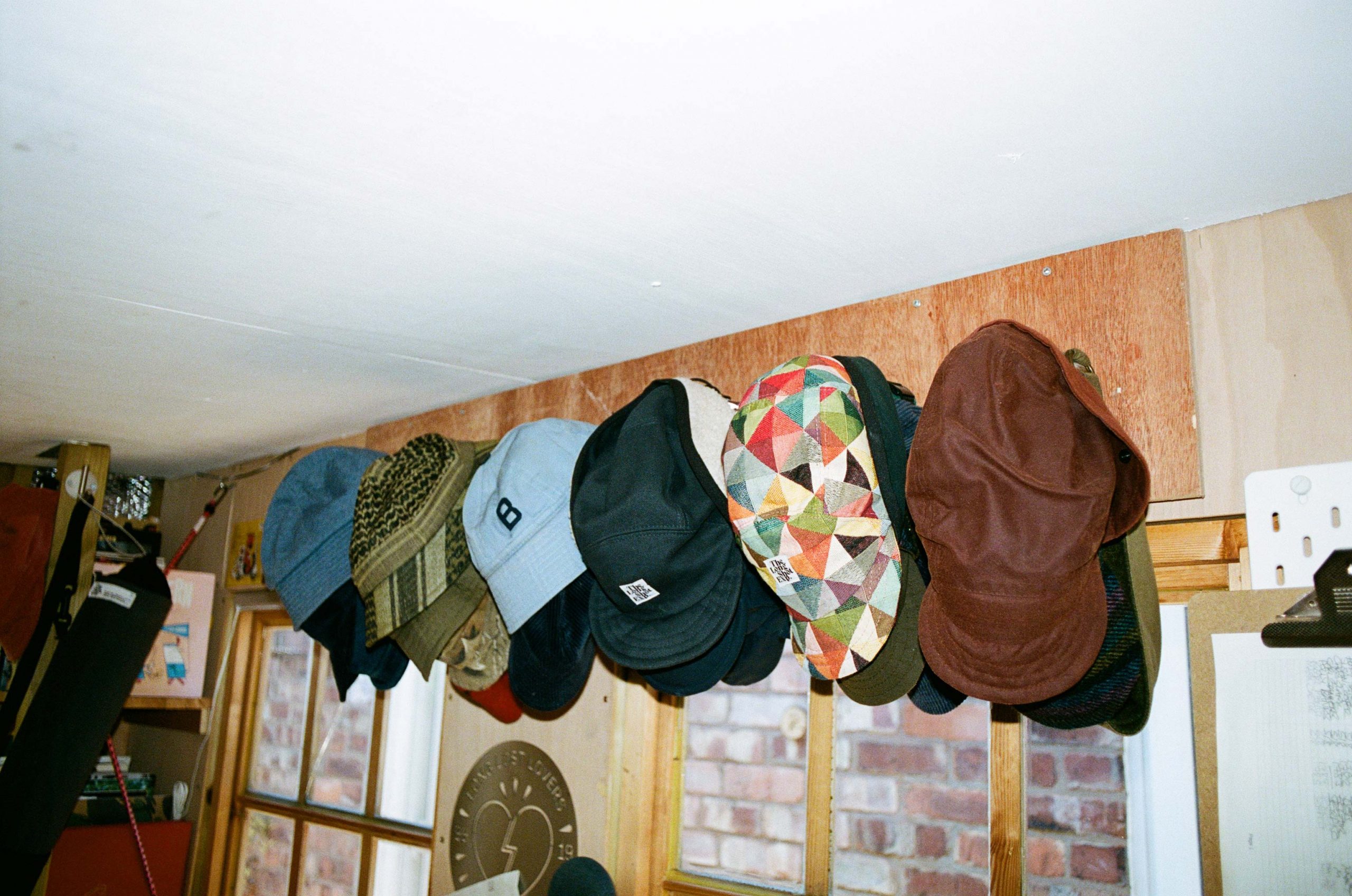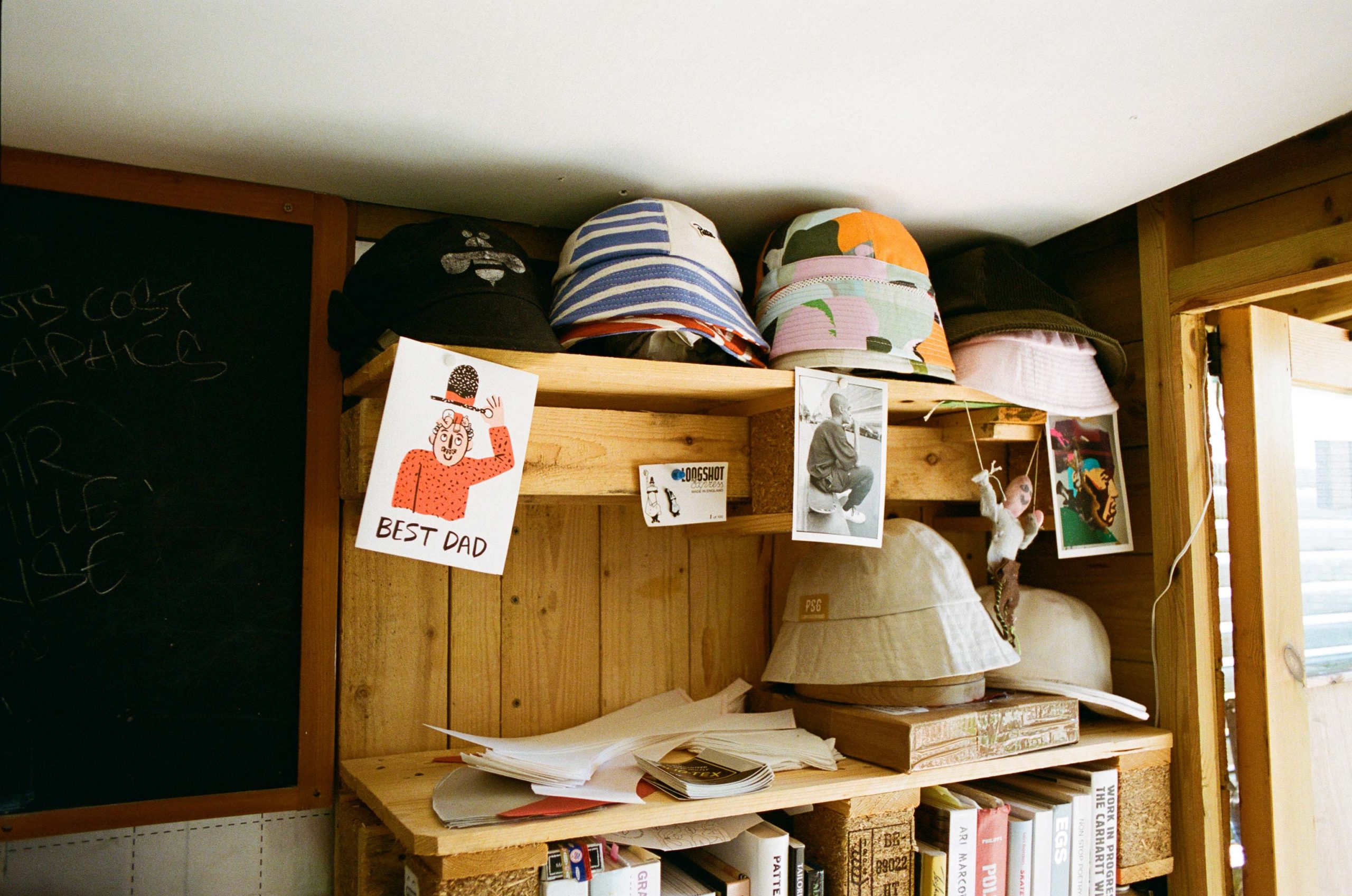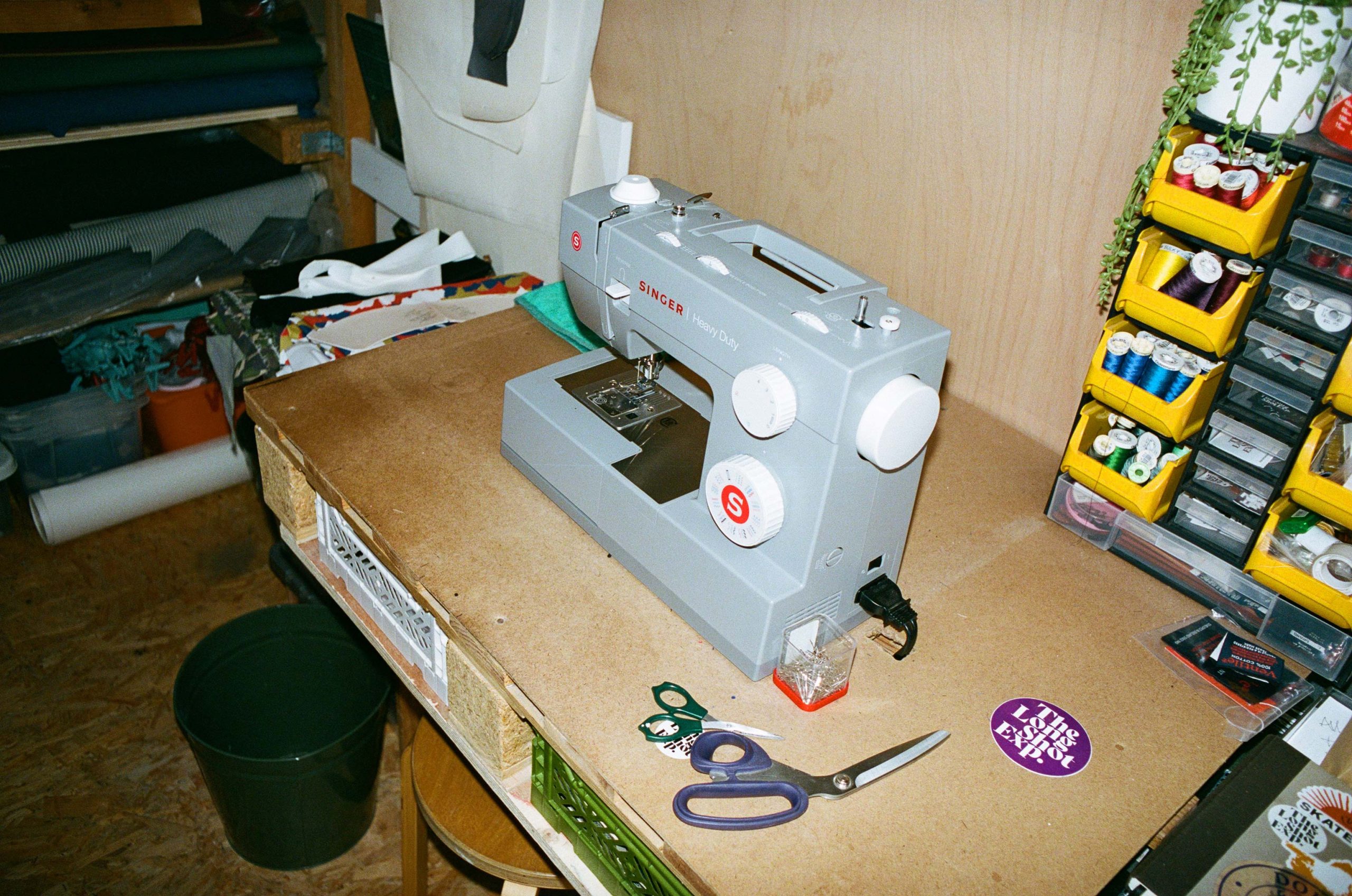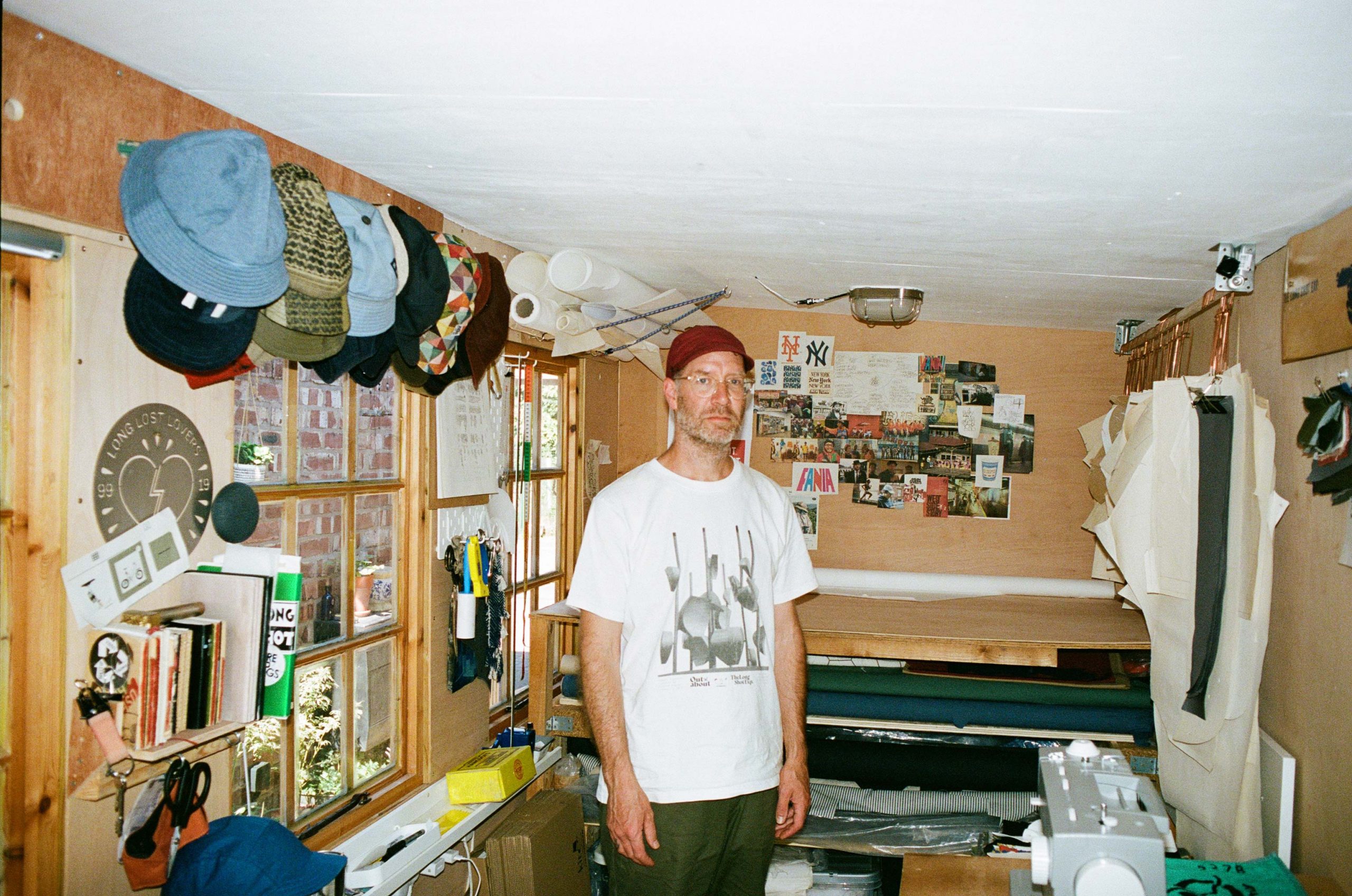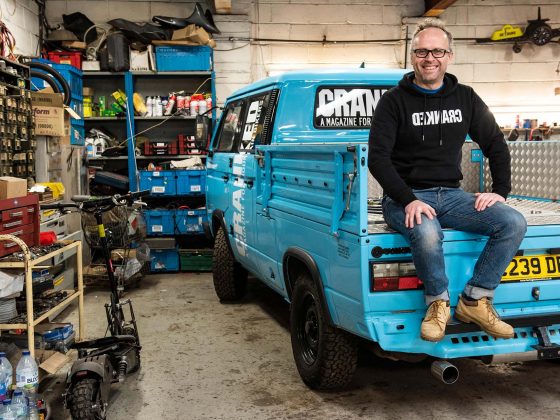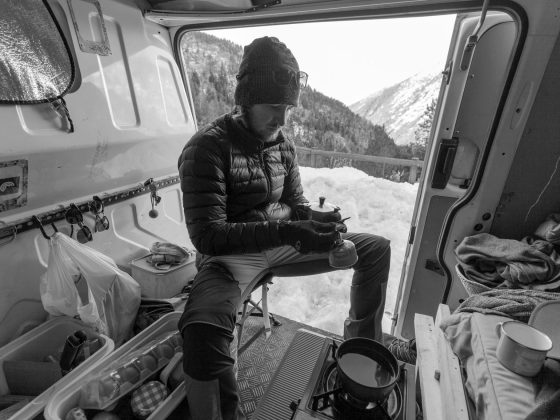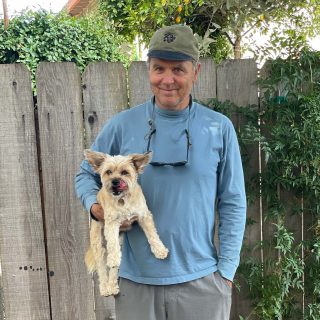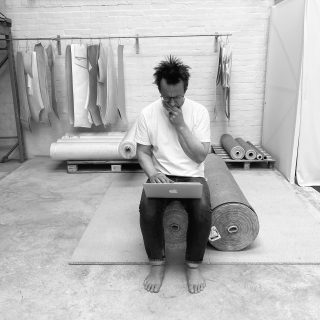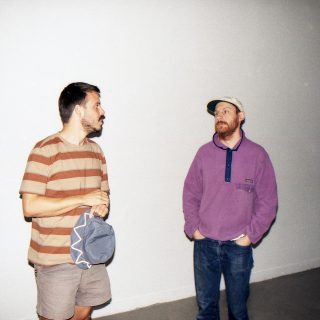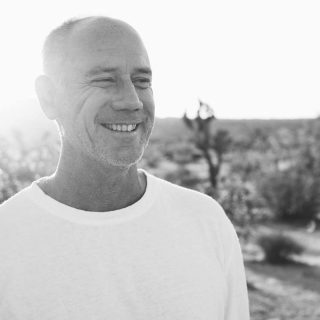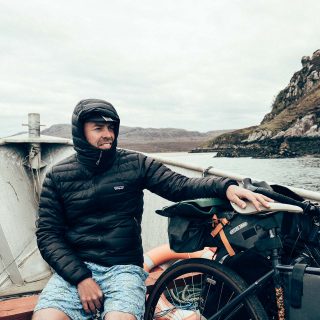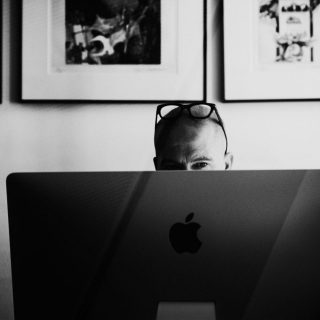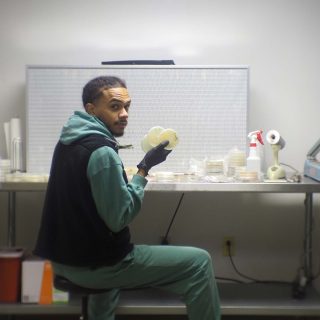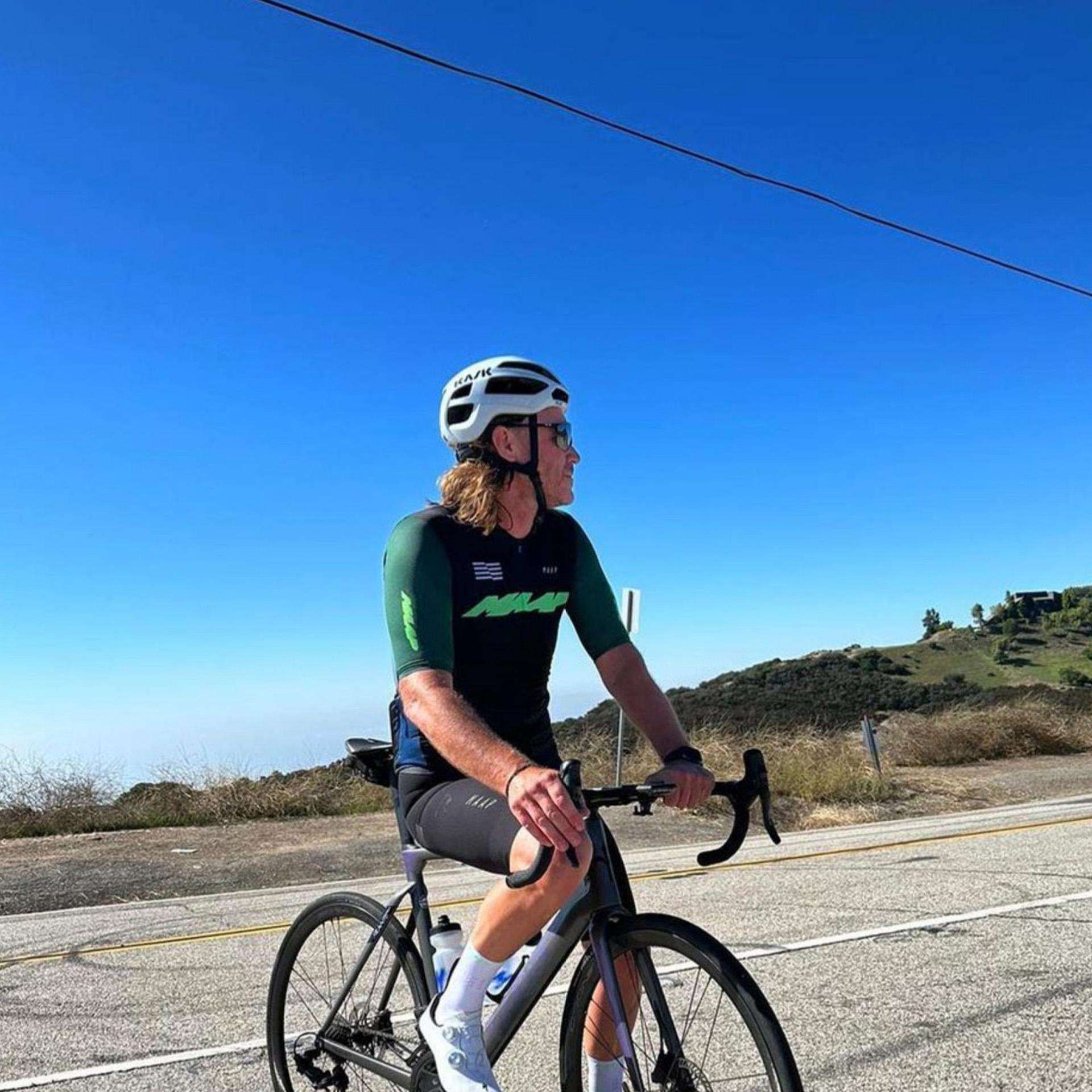An Interview with Mike Holmes, founder of the Long Shot Experiment
Our chat with the master hatter
Mike Holmes makes really nice hats. With his brand the Long Shot Experiment he combines underground subcultural styles with a level of craftsmanship usually reserved for tailoring—making every hat himself, one at a time in his Manchester workshop.
Whilst his meticulous process might seem at odds with the rest of the clothing industry, thanks to the sheer quality of his wares (and the far-reaching powers of the internet), he’s managed to carve out a distinct niche, catering for those who appreciate the finer details.
Hot on the heels of a recent collaboration with Patagonia’s Manchester shop—making one-off caps from donated gear as part of their Worn Wear campaign—we talked with Mike about headwear, Serpico and the importance of ‘doodads’…
Going back to the start, how did the Long Shot come about? What made you want to make hats?
When I left school in the late 90s I wanted to make clothes. I did a BTEC in clothing technology—which was pattern cutting, manufacturing and production methods for factories—and that’s what I wanted to do.
Coming up through skateboarding and seeing labels, there was a naivety of not understanding how it worked. If Andy Howell started a label—like Underworld Element—he’d have all these people around him enabling it—but what we saw was someone who looked like us who was able to have an idea and just do it. And that’s what I wanted to do, so I started a t-shirt company—I suppose this was in the early days of streetwear.
That era of brands like Silas that were sort-of skate, but also linked with music and other stuff?
Yeah, exactly. These brands would come through the skate community, maybe in a shop like Slam, but then they’d get The Face or Sleaze Nation. Like for example there was this guy NOKI who’d get old adidas gear and pepper it with holes, making big trefoil balaclavas, and he’d always get his stuff in these magazine editorials. So anyway, I never really made clothes, as such, but I’d learned those skills, so when my wife was going back to work after our second child and I was working as a graphic designer in Liverpool, we figured out that with the travel costs and childcare costs, it’d just cancel my wage out.
But after a couple of weeks full time parenting, I realised I needed something else. I like having an idea, figuring something out and then trying to make it, so I made myself a hat. I’ve still got that first one—the shape is all wonky and there’s nasty seams all over it—but at the time I thought it was great. I then realised I could set up an Instagram and a free e-commerce website, and it just allowed me the space to make these things which gave me a creative outlet.
To start, it was more of just an outlet whilst being with the kids. I think in the first year I might have sold five hats… but it did what it needed to do. And being a graphic designer it allowed me to make up little logos and that kind of thing. It was play really—it allowed me to continue to play, and then as the years went on my reach got bigger. And then I started getting customers coming back.
Subscribe to our newsletter
And that’s when it became more than just a few hats every now and again?
The first 100 hats were numbered—and they’d be one offs. The website was really just an archive of them, and they were all sold out. I’d get emails saying, “I really like your stuff, but everything’s sold out.” So that pushed me more into thinking about seasons. And by that time I’d looked at properly sourcing fabric, rather than just picking what was around. And then my wife hipped me to the idea that people get paid at a certain time of the month—I was just releasing something on maybe the 13th, and then wondering why no one was buying it.
I suppose there’s maybe a difference between having a hobby and then turning it into a business. It seems like a hard balance.
That’s something I still don’t get right. Because it’s so personal to me, when I do something I think it’s brilliant, and if it doesn’t really hit, I almost take it personally. I shouldn’t, but I do—I’ve not got that separation.
I did a project with Clown Skateboards and PSG, and that was a real eye opener as to what I can achieve on my own. Originally I was going to make 90 hats, but in the end I made over 200. I remember Carl at Good Measure telling me, “There’s a difference between being busy, and being a busy fool.” And in this respect I was perhaps a busy fool. I couldn’t do anything else and I didn’t have time to think of my next projects, because it consumed me to such a degree.
It was a brilliant project, and I learned a lot of lessons, but I think if I did it again, I’d try and find somewhere in the North West that could do production. Then I could be here still doing the smaller things. I can’t see a time when I’m not making some hats—I’d really miss that physical thing. It’s about having that feeling at the end of the day—that achievement of having made something.
It’s not some abstract job—It’s quite straight-forward—just knowing you’ve got to make some hats.
It’s nice to just go into my workshop and think, “This is all I’m going to do now.” I’ll sit in there, with my little speaker just blasting music. It’s really indulgent… in fact the whole thing is really indulgent.
Haha… one big folly?
Yeah—I sit there, I obsess about some detail, and then I think of some name or graphic. It’s like the shirts I did with Good Measure. Early this week I went climbing with my daughter—and we were going to get some pictures of the shirts whilst we were there. But when we got there, her friend and her friend’s mum were there… so I felt a bit awkward.
So we just quickly took a few pictures and went climbing, and because I wasn’t standing still and I wasn’t looking at the camera, I was thinking, “This hasn’t worked.” But because it is—like you say, a folly—why not play off the fact that it’s all a bit shit? Why not just lean into that? Why not just focus on those stupid things like me not smiling or not standing still?
Almost celebrating the fact things didn’t go to plan?
They don’t look like professional shots… but that’s because they were taken by my ten year old daughter while I was embarrassed in front of her mate’s mum. Why not embrace that and have a bit of fun with it?
And quite often people go the other way… making fun things serious.
I suppose I don’t look at those things. I remember Gary Warnett made a comment about 50 year old men wearing Stone Island, saying it was like working class cos-play. And it is like that in fashion editorials—let’s find some moody flats and have a pit-bull. Everything’s a bit serious and no one smiles—that’s where the idea of those Good Measure sweatshirts came from, with the line, “It’s good to be good.”
But there are so many places out there now that do good stuff. There’s a place I’m fascinated with called Paperboy in Paris. It sort of looks like a butty shop… but then they’re doing collaborations with New Balance and Gramicci. Apparently it is actually a butty shop—I’ve seen pictures of this small working kitchen, with all these boxes of New Balance stacked up. And that’s amazing. I just assumed the butty shop was a front, but it’s not—they just happen to be into streetwear.
And it’s amazing how things like that can exist now. Like with Long Shot—you would have been able to make your hats 30 years ago, but getting the word out and keeping it going wouldn’t have been easy. The most you could have would be a little ad in the back of a magazine.
You couldn’t go beyond a very small scene and spread like you can now. I think anyone can do it now, which is good and bad—but it pushes you to be better—whether that’s better fabric or a better product or even just a better story.
I think that’s one thing that really separates what you do—there’s these details and nods in your hats—whether it’s what it’s based around or what you’ve called it.
I love those little nods—if you don’t get them, it doesn’t matter, but for those who do, it adds something more.
Give us some examples then…
There’s my mountain hat—which is my slimmed down version of the Lowe Alpine hat, which was a real scally hat. I wanted to take this very simple, iconic thing—and try to do the best production I could.
I didn’t want to call it ‘Shackleton’ or something like that, because for me it wasn’t about that—it’s worn from Flixton to town on a train, so I didn’t want to oversell the ‘mountain-ness’. But then I thought of ‘Ain’t No Mountain High Enough’, and it became the Marvin Hat. And I’ve got another mountain hat I’m going to do this time, which I’m going to call the Terrell after Tammy Terrell. And it doesn’t benefit anybody to know these things…
But it adds something doesn’t it? It shows there’s a real person making these things.
Yeah, it’s about something, and it’s from somewhere. I think often with art and fashion, the system relies on this idea that artists or designers are geniuses—and you and me are not. But I like to show that this stuff doesn’t just come from nowhere. With my kids growing up now, I always want to show them what they could be. The commercial system doesn’t work if everyone is creative… but everybody is. I meet all these people who say, “Oh, I’m not creative,” but everything you do is creative—even crossing the road.
We’ve gone a long way there from you asking about naming hats—but it’s about trying to give a nod to these unsaid unspoken things—saying, “This is what this thing is about, if you pick up on it, then maybe it’s for you.”
It’s the same as the shapes you make. They’re interesting hats—you’re not just making a baseball cap and a beanie.
You’ve got to have a reason to do something. I’ve just done these caps—which are like a five panel cap, made from Ventile. In Style Wars there’s a scene where they’re painting, and the guy filming asks, “What are you doing there?” And Seen says, “Bits! Doodads!” And obviously within graffiti culture doodads are important—they’re those little extra bits.
So when I was making my cap I had this idea of the elastic drawstring to come over the top and through this little loop—so there was a better adjustment system, but when I put it on and pulled the drawstring, it just crunched the whole hat up. It just didn’t work—so in the end I connected the elastic in a normal way, and kept the loop there anyway, as a doo-dad. It’s an evolutionary piece—like the tailbone.
And that’s not the sort of thing a huge company would do. What’s the process of actually making a hat?
The idea of the design will come from something specific. With something like the Serpico hat [inspired by Al Pacino’s bucket hat in the 1973 film], the Japanese model of making something like that would be to find the original, find the machine that made it and reproduce it. But I can’t do that—and also, I don’t want to.
It wasn’t really just about the shape of the hat, but more about the magic. In the end I found out that the real hat he wore was a dixie cup—a sailor’s hat from the army and navy store, just flipped down—but I liked the idea of making the hat, without really looking at it.
Inspired by it, rather than straight up reproducing it?
Yeah—I want to watch Serpico, see how it is, and then come away and try and build it from there. It’s an interpretation. After all, people wear them well, but will anyone really wear a hat better than Al Pacino in that film?
It moves stuff forward too—it’s not like some historic dress-up thing.
When I was young I went through all kinds of subcultures. When I was just leaving school I got this book called Street Style by Ted Polhemus that starts with teddy boys, then covers hippies, mods, greasers and rockers. I loved it, and from there I got quite into dressing like a mod—I’d get bespoke suits made, with all these silly details. But I looked around and thought about the idea of mods, and how they were modernists—and then we were dressing like a picture of someone from the 60s, and only listening to certain music.
“I like taking these iconic things, and then pushing them out of their comfort zone.”
It was fun, and it looked cool—but if you can wear it with something different, like some tech stuff, then that’s how you really move things forward. I remember on Bold Street in Liverpool seeing this older scally—he was wearing trackie bottoms with suede Wallabee boots. And I can just remember standing and staring. That was it—him just having that little shift of things that didn’t belong together. I like taking these iconic things, and then pushing them out of their comfort zone.
I saw you recently did a project with Patagonia, making new hats out of old fabric—how did that come about?
They have this ‘Worn Wear’ concept—they have these times in the store where you can take your stuff in and they’ll fix it. They were looking for something different to do as an event and they thought of me. They put the call out for people to donate stuff—it didn’t have to be Patagonia gear, it could be anything—they could bring it in, donate the piece and over the weekend we’d make it into a hat which they’d get for free.
What I realised doing it is that although I might think of myself as creative, I’m quite conservative. Whilst I was being quite careful with where things were going to go, Martina, who’s their machinist, was cutting through zips, having all these choppy bits together. I saw that actually I like an element of control—maybe I’d put that down to having a graphics background.
Is it good to realise things like that? It pushes you in different directions.
Yeah, it frees it up. One hat I made was from this nice turquoise down jacket—and it was really weathered. When I was making it I dropped one of the panels on the floor—so I ended up grabbing a different coloured panel—which I’d never usually do ‘cos I’m so anally retentive. But just this one asymmetric panel actually looked really nice.
Like an old car with a different coloured door?
Yeah—there’s no balance to it. This one, wrongly coloured panel actually looked pretty good. And that’s got me thinking about being a bit freer with my colours. Because of the way I work, I only ever have to make one of something. Some colourways or styles I’ve only ever made one of—I’ve put them online and they just haven’t hit—but fortunately because I make every one to order, I’m not sitting on 50 dusty pink hats. Although pink usually does quite well…
It seems like there’s been a small movement towards these kinds of recycling projects or ideas—where people are making pretty impressive things out of old outdoor gear for example. Do you think it could ever reach the mass audience?
Someone could do it on a bigger scale—getting loads of machinists in. But I suppose it’s one of those things like Brexit—when that was going on it was like, “Of course we’re not going to leave—everything I see is ‘remain’.” We see what we believe in, so although all I see are these small brands doing well, as a movement, they’re still a very niche thing. Is there enough of a bottom line? I think we’re still far away. It’s like when there was a rise in the use of fabric made from recycled plastic bottles—and then someone thought, “Why don’t we just produce plastic bottles here, and then make them into fabric straight away.” It’s a genius idea, but it thoroughly defeats the point—it’s a horrible anathema to why using recycled bottles is a good thing.
No way—did that actually happen?
Yeah! These factories realised there’s a huge expense in getting the recycled bottles, cleaning them and sorting them, so they just bought them directly from the factory and wove them into clothes—and they could still sell them as recycled. Nobody’s saying anything untrue, but the ethics are just horrendous.
It seems like there are a lot of these scams around. Changing subject slightly, where did the name Long Shot Experiment come from?
I was thinking of graffiti tags that had two words in them—there’s an old New York writer called Dead Leg who had apparently been run over, so he did actually have a dead leg. Anyway, I was sitting daydreaming about if I did another brand—and Long Shot came from that. I like things that are already in the vernacular—it’s already got its own life, and you’re subverting it somehow. And it was a long shot, because I didn’t know if it was going to work. So it was the Long Shot Experiment. And it wasn’t tying me down to anything, and setting my targets low.
Very sensible. Wrapping this up, have you got any wise words to end with?
I’d say to anyone, if you’ve got a feeling, just give it a go. It doesn’t matter if you just make one and no one ever buys it, at least you’ve given it a go. Just try.
There’s this guy called Kid Acne, who’s always been inspiring to me because I didn’t understand how he got so much done. He’s a graffiti writer and an illustrator and a musician and probably 27 other different things—he’d be making zines, putting up fliers, doing pieces all over the place or making music. I thought, “How’s he doing all this?” But then it clicked one day… he just does it.
Not sat thinking about it?
He gets going with stuff, and it comes out. That’s when I realised that I could stop daydreaming, and just try that daydream, and see how it worked. And it took me far too long to figure that out.
